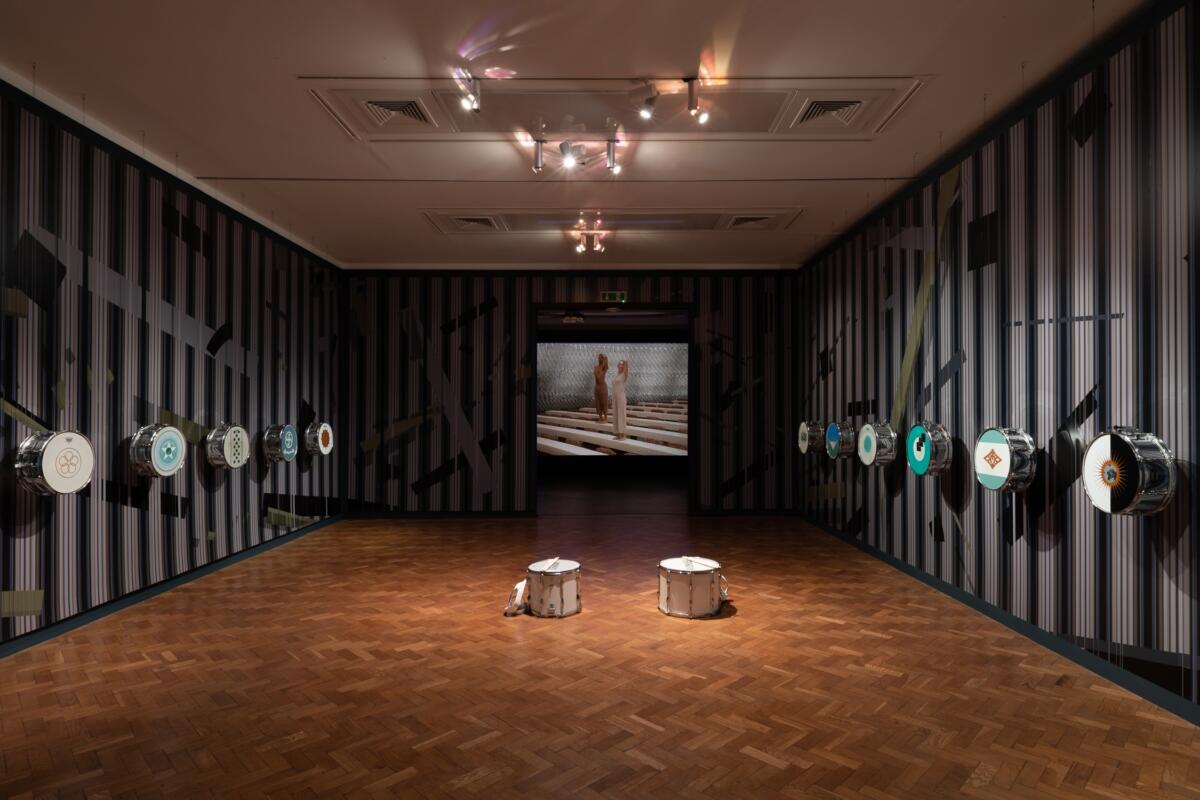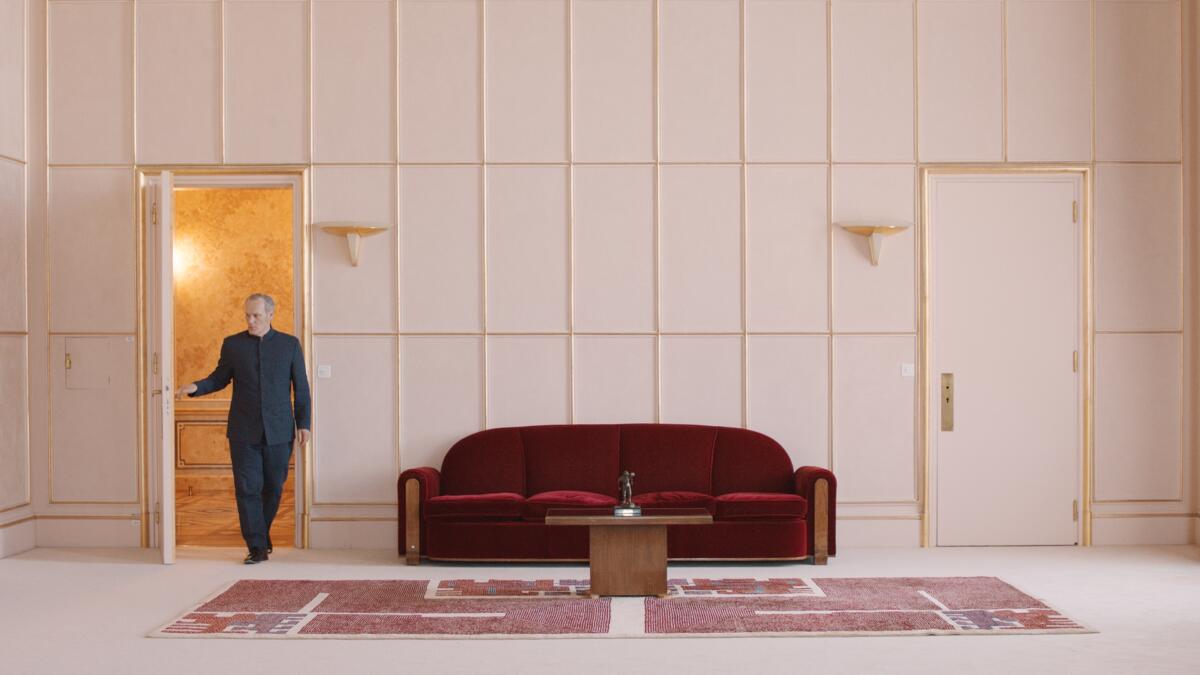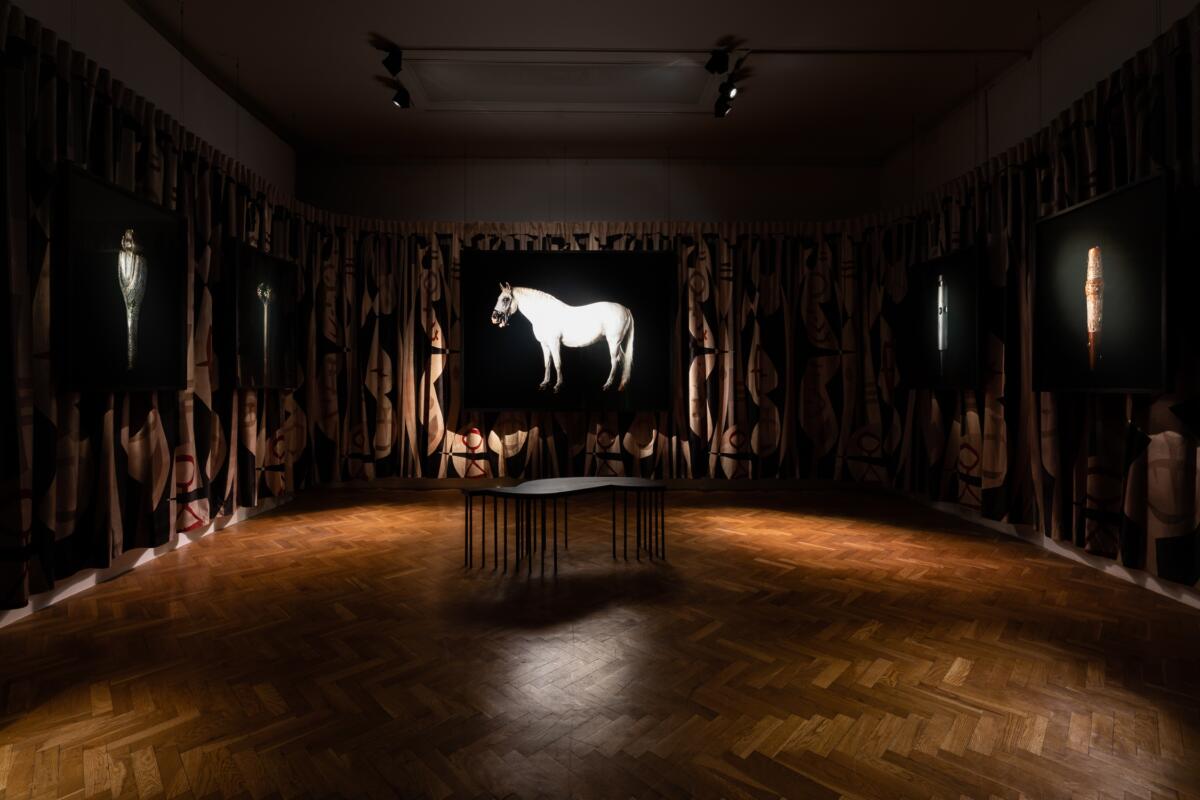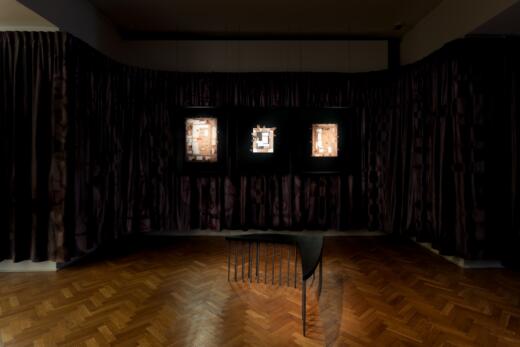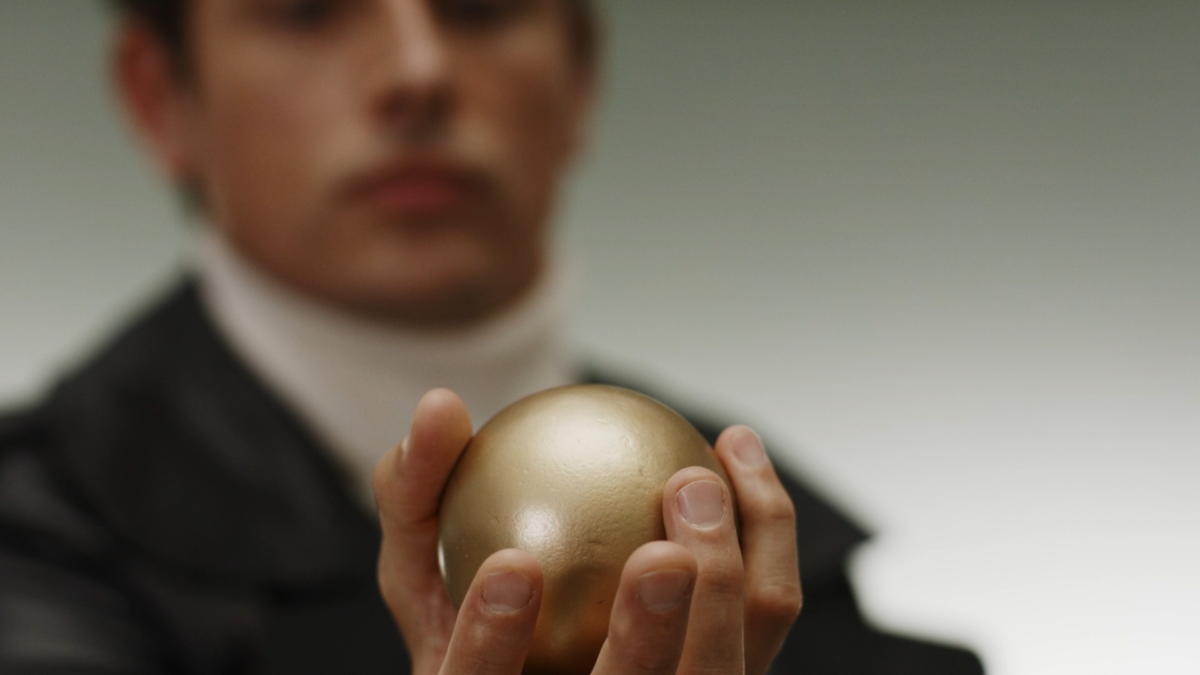
Jasmina Cibic compares her exhibitions to a creature that absorbed years of archival research. That is surely a case of her long-term project dealing with the subject of the gift economy and soft power that travels from one European city to another. Before coming to Łódź, Cibic’s artworks were presented in a completely different set-up each time in Graz, Dundee and Ljubljana. After The Palace closes in Muzeum Sztuki, the new exhibition will take place at macLYON. Each time, Cibic challenges notions of solidarity as well as political style.
Magdalena Rekść: Jasmina, once again, let me congratulate you on your fascinating and inspiring exhibition, The Palace. I find your concept of political communication as exchanging gifts very appealing. Such gifts are not always welcome and, moreover, they may become even embarrassing after political changes, e.g. the Buzludzha monument. So your exhibition has a universal message: it perfectly describes our world as conquered by the phenomenon of soft power.
Could you explain what motivations were behind this exhibition? How did you come up with the idea for it?
Jasmina Cibic: The starting point for the exhibition is the film titled The Gift, a film about culture and cultural production in times of political and ideological crisis. The Gift is a film about us, the cultural producers and makers of critical content. It’s a film that reaches into depths of historical case studies and examples of culture deployed as a Trojan horse of political and national power – within the contemporary conditions that constitute the perfect time to be delving into ready-made historical witnesses of culture hijacked in the name of ideology.
This is a film that choreographs prime examples of the political gifts of culture – from architecture, music, art and dance – gifts that were made during some of the seminal moments of European identity crises.
I call it a device, but rather it’s an organism. An organism that consumed years of archival research on soft power and culture as its preferred diet. For years, I have been investigating the specifics of successful and failed national icons, from cave beetles named after Hitler to the palace that hosted the first conference of the Non-Aligned Movement in Belgrade in 1961. The Gift distils decades of my research into a single artistic sentiment – which simply states how universal and timeless the hijacking of culture by ideology is. We live in a time when the nation has lost its centrality as a political category and yet reasserted itself in a surge of right-wing populism. We live in a moment fully echoed within the featured architectures and the story told in this film.
The locations in the film are all political gifts themselves. They include Oscar Niemeyer’s French Communist Party HQ in Paris, the Palace of Nations in Geneva, Mount Buzludzha in Bulgaria and the Palace of Culture and Science in Warsaw.
The film amalgamates these architectures built across European space, time, and political style into a seemingly singular architectural stage, a paramount metaphor of the timeless Trojan horse of political and national power. A metaphor that hosts the film’s narrative within its bones infused with ideology.
MR: What is the film The Gift about?
JC: The Gift tells the story of a competition for a perfect gift that could heal a divided nation and reinstate its values.
It opens with a tableau vivant setting – three young girls ascend onto the diving platforms of the Palace of Youth swimming pool – set within the Palace of Culture and Science, the building gifted by Stalin to the Polish people. A voice over the institutional intercom acts as a chorus setting up the narrative: we hear that the nation is broken and a perfect gift to heal it must be found. The gift must not show wear and tear, the people must be able to reuse it and it must be able to circulate without diminishing. In short, we hear that the only possible gift that fits this bill is culture. It is the three young girls, the harbingers of societal ideals and hope, that announce the competition.
The film’s main characters are the competition’s judges – four Fundamental Freedoms, characters drawn from a concept coined by Franklin Roosevelt to inspire support for US entry Into WW2 with the promise of a brighter future. The Freedoms from Fear, from Want, of Speech and Worship summon three allegories, three men – an Artist, a Diplomat and an Engineer – to take part in the competition. Each of the characters is composed from a set of historical figures with diverse ideological positions on the utility and servitude of culture within political interest. The sources run from across the political spectrum, from Mitterrand, to Stalin, Thatcher, Tito and Mussolini.
We first encounter the three competitors in the lobby of the French Communist HQ in Paris as they expand on the politics that have informed their proposals and designs. Their dialogue consists entirely of found text, drawn from nation-building speeches by past and present politicians from Europe and beyond, and from planning discussions about the buildings used in the film that address ideas around soft power and cultural diplomacy.
In the bright, open space of the French Communist HQ in Paris, the Engineer presents his idea first. A firm believer in the physical and ideological connection between the state and its people, he proposes the gift of a ceremonial, palatial government building with supernatural powers – presenting its model to the Freedoms.
Next, the Diplomat pitches an immaterial gift: a specially commissioned piece of music. He is accompanied by a violinist in the antiquated corridors of the Palace of Nations in Geneva, whose playing emphasises the dream-like nature of the Diplomat’s vision, which he hopes will instil virtues such as honour, pride and justice in the nation’s citizens rather than looming over them like an imposing, symbolic work of architecture.
Finally, the Artist suggests a perfect work of art that will synthesise long-standing debates about the nature of political art, asking vital questions about the relationship between cultural production and ideological discourse that will help the nation build a new society. As he speaks, two dancers help him to create a tableau vivant, offering a glimpse of how such a radical artwork might look.
As the Artist’s gift is unveiled, it springs out of the pristine futurist dome where the contest is completed, only to reveal that same building as a derelict monument, signifying the destruction of the symbolic ties between society, state and culture, a reminder of past ideals and their collapse in the rise of populism.
The anthropologist Marcel Mauss writes: for the gift economy to fully function, the gift must continue to circulate. When the gifts are fixed architectural stages, ascribing political action, it seems the only way they can continue to produce this circulation is through the discourse they produce. My team and I have been so fortunate to not only get these locations on board the project, but also to reactivate them in this very circulation of criticality – by giving us the access to their archives – which feeds directly into all other sectors of the film – the choreography, music and artworks featured.
An example of this circulation is the music performed in the film, which is drawn from the musical compositions gifted to the League of Nations after the Palace of Nations shut its doors during the WW2. These are compositions never activated nor performed before now.
With such methodology, The Gift turns from being a mere chronicle of the overlapping history of people and things and rather – in a performative manner – unveils how culture can become a tool exploited by powers to define relationships and rule situations that are becoming catastrophic emergencies today. In other words, The Gift intends to produce knowledge by unveiling hidden relationships, “quoting” real fragments of the past to provide the viewer with a visionary, penetrating tool for the understanding of the present.
MR: The message of your exhibition has a universal meaning. We often hear that influential actors, e.g. empires and corporations, try to impose their systems of values. Their “gifts” – “Trojan horses” – are not always welcome, and they often cause many problems, as in Iraq, for example.
JC: The historical ready-made of the gift economy is quite interesting when it cross-pollinates with the laws of the capitalist sphere – especially as in its origin, the gift economy is precisely in opposition to the logic of the capitalist economy. It’s the unwritten contract of the “retribution gift” that creates a seismic effect when it enters the patriarchal version of circulation that infuses most of the world today. Of course, gifts made to impose systems of values, convince, entice and bribe are nothing new, and most of human civilisation has utilised this systemic soft power mechanism (obviously without naming it as such) for millennia. What I personally find incredibly perturbing is when the vehicle of this intent becomes culture, and how we can , as cultural producers, withstand this with (hopefully) new modes of resistance.
MR: The opening scene of The Gift takes place at the Palace of Culture and Science. What inspired you to base your work on the motive of this building?
JC: In my work, architecture always acquires an agency of its own, as it frames, stages and organises human actions into carefully choreographed performances, decoding and ascribing spaces of political power. One cannot help but wonder exactly who or what is the main protagonist in my films: is it the buildings, their users, or the concepts? Or is it actually their ritualistic relationships? I attempt to deploy architecture through the medium of film – to set a poignant reminder of the century-long relationship between modern architecture and the mass media, a relationship without which, as Beatriz Colomina would argue, modern architecture would not exist at all. I try to go further in finding a common entanglement of architecture with the concept of political authority via mass media and staging; I carefully select – as central protagonists and filming locations – buildings that served as theatrical devices for political power. Erected during seminal moments of identity crises of European ideological beliefs in the 20th Century, the architectures I selected for the film The Gift, however, are not products of commissions pointing to soft power mechanisms of (trans)national politics, but gifts to authoritarian structures by various subjects aligning themselves with these very same belief systems (nations, citizens, international community). As the anthropologist Marcel Mauss writes: for the gift economy to fully function, the gift must continue to circulate. When the gifts are fixed architectural stages ascribing political action, it seems the only way they may continue this circulation is through the discourse they produce. The Gift connects various historical, and even ideologically contrived, buildings and their inhabitants (political parties, unions, heads of state) for their common entanglement with the economy of gifting and the unwritten contract of the return of a retribution gift (to the nation, citizens and/or the international community).
The Palace of Culture and Science is one of the many buildings featured in the film that share across space and time the same faith of political gifting (as described at the start of the interview). What I was particularly drawn to in the case of Palace of Culture and Science was the research by my friend Michał Murawski and his concept of power verticals that I adore so much. So I would say his book on the Palace was a “guiding star on the journey to transform”, to quote one of the architects. The concept of verticality and the patriarchal connotations of it (there is a gorgeous excerpt of Michał’s book where he is quoting the architects getting completely ecstatic when they are choosing the height of the Palace whilst being flown up onto the set heights to test them). I placed the scene filmed at the Palace at the start of my film and attempted to break the power verticals with the female principle and voice – also presenting the gift economy as a parallel version to the neo-liberal one we are all entangled with.
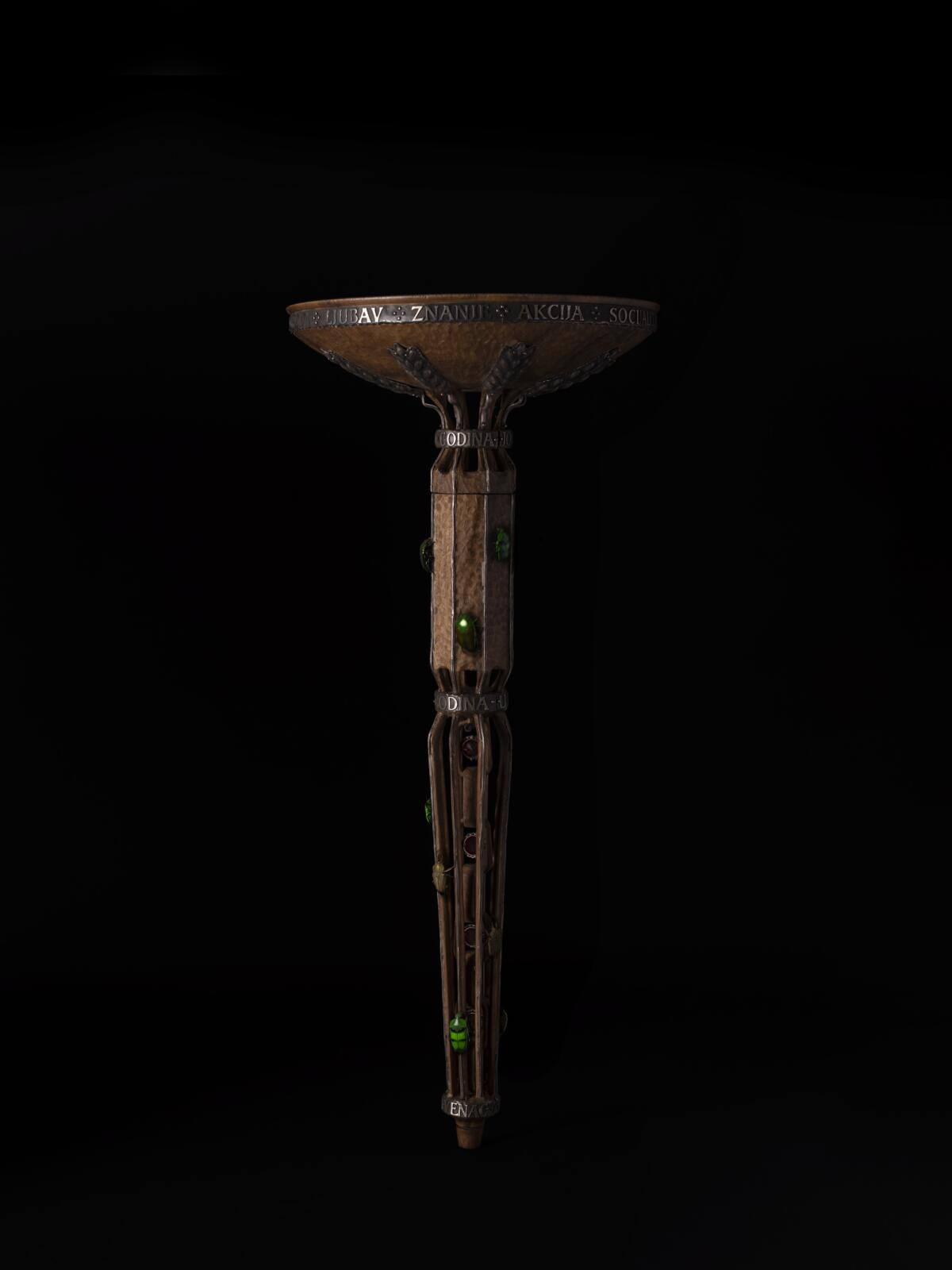
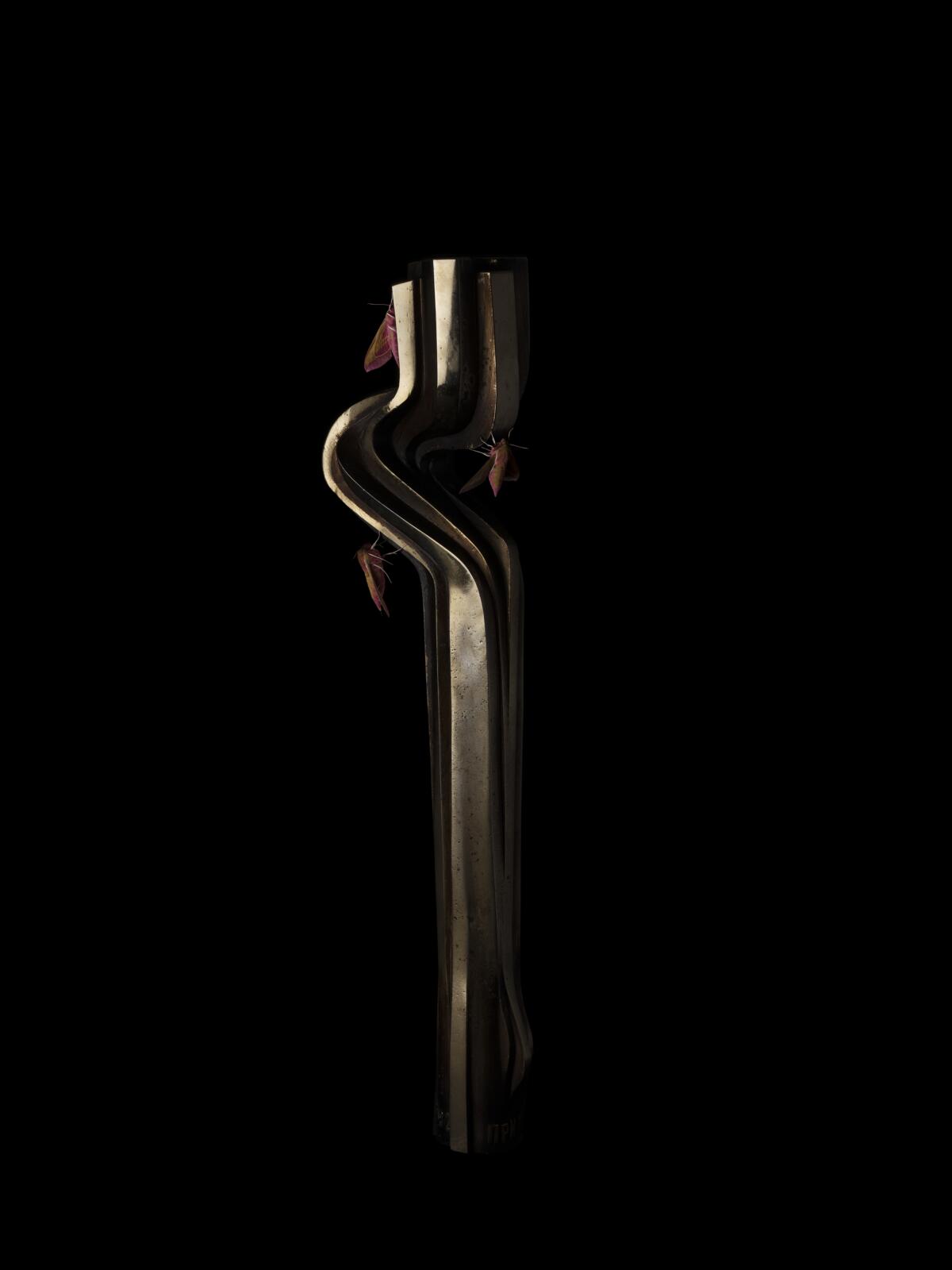
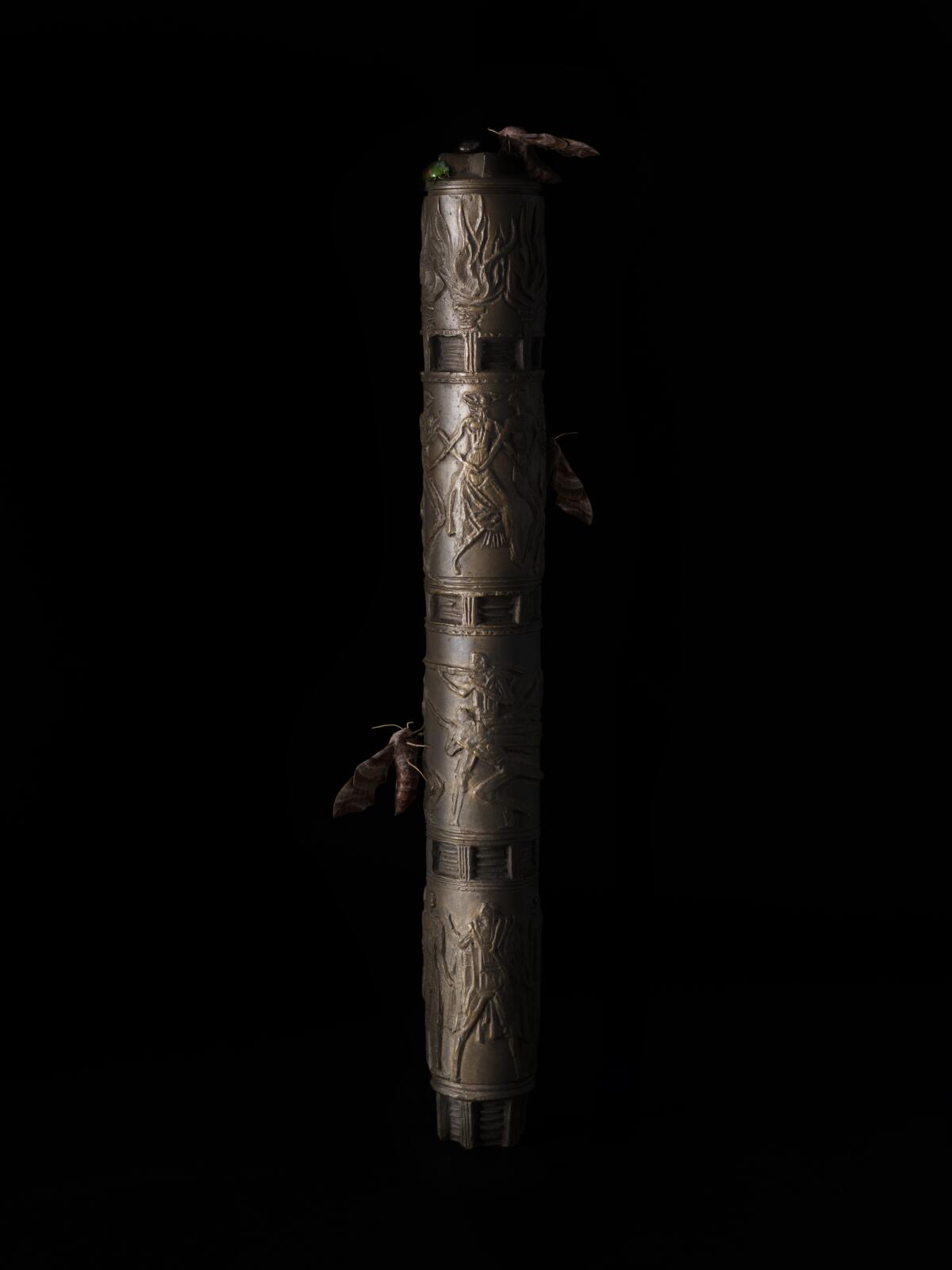
MR: The film that is part of the exhibition includes archival materials, e.g. speeches, transcripts, letters. Why do you find them so important?
JC: I have been using historical examples as a part of my practice continuously – perhaps because I wanted to find a way of turning the geopolitical gaze of the art system back on itself – and extrapolating archives via artist research also in a way that utilises not merely formal exhibitionism but attempts to speak of the broader sociopolitical circumstances of the source material itself, material that so many times becomes sensationalised and regarded as a colonised source. I am continuously excavating, with the aim of finding diverse manifestations of the relationship between culture and (inter/trans)national power, archives (especially of dead states, political or ideological unions, international relations) because I feel they tell us so much about the legacy of the permutations of soft power strategies and methods. It’s a bit like working with the opus of a dead artist – this perhaps can be seen as a reversal of the system’s own code of messaging.
MR: You work not only in film, but also in sculpture, installation and in performance. What is the role of music in your performances? You collaborated with Polish artist Barbara Kinga Majewska.
JC: You are referring specifically to the piece composed for the exhibition The Palace of Solidarity: an installation that merges political rhetoric on culture and the missing female presence from all nation building acts of 20th century politics. Here the all-female ensemble performs the archive-drawn statements that were hijacked historically from women and that instrumentalised art and architecture. Sung whilst reclining on hammocks embroidered with political slogans, the performance brings state power, culture and the artist’s body into a single spectacle. The melody composed by Polish artist Barbara Kinga Majewska I drew from the archive of The League of Nations held at the Library and Archive of the UN in Geneva. Among various scores – all donations by amateur and semi-professional composers – there was one by a composer named Brabes, who we identified as Barbara, as of most interest. It’s a very ambitious piece – a composition for an orchestra – where there is a detail within the score that features a “ghost voice” as we lovingly termed it with Barbara. It’s strange as the score was sent to the League of Nations as a gift – and as such it stood as a completed project. This missing voice within the score was a gorgeous metaphor precisely for the mentioned missing female voice from all political active stances. All the donated scores were sent to the Palace whilst it was shut during WW2 – and also this act of gifting music to a non-functional building is paradoxical, as the Palace was built to host the “parliament of the world” that was to prevent another world war. The donations were all marches and anthems – effectively two forms of music a nation state needs at its birth (anthem) and death (war/march).
MR: You live in London, but you come from Slovenia. Does your origin influence your art? If yes, how?
JC: I never studied art in Slovenia but in the UK, so I would say my practice is mostly influenced by how the art system and its power verticals read non-Western cultural producers – and what/how they impose on them by form of cultural appropriation and expectation. I am continuously interested in merging diverse work methodologies, subject matter and media in new workflows that break established patterns and perhaps suggest different ethical relationships within the art system.
MR: During our first conversation, you told me about your mixed roots. It did not surprise me because in Slovenia there are many immigrants from the former Yugoslavia. How would you define your identity?
JC: I do think so many of us – especially in the creative sector – share the feeling of non-belonging and othering, so I would ascribe to myself this continuous feeling of otherness that is not national but supranational. Especially now in Europe, so many of us – even those who never left their native countries – do not recognise our surroundings. This is perhaps why I continuously try to evade this systemic evaporation of ground – by building new bridges with art institutions, creatives and archives – to knit new networks of solidarity and support.
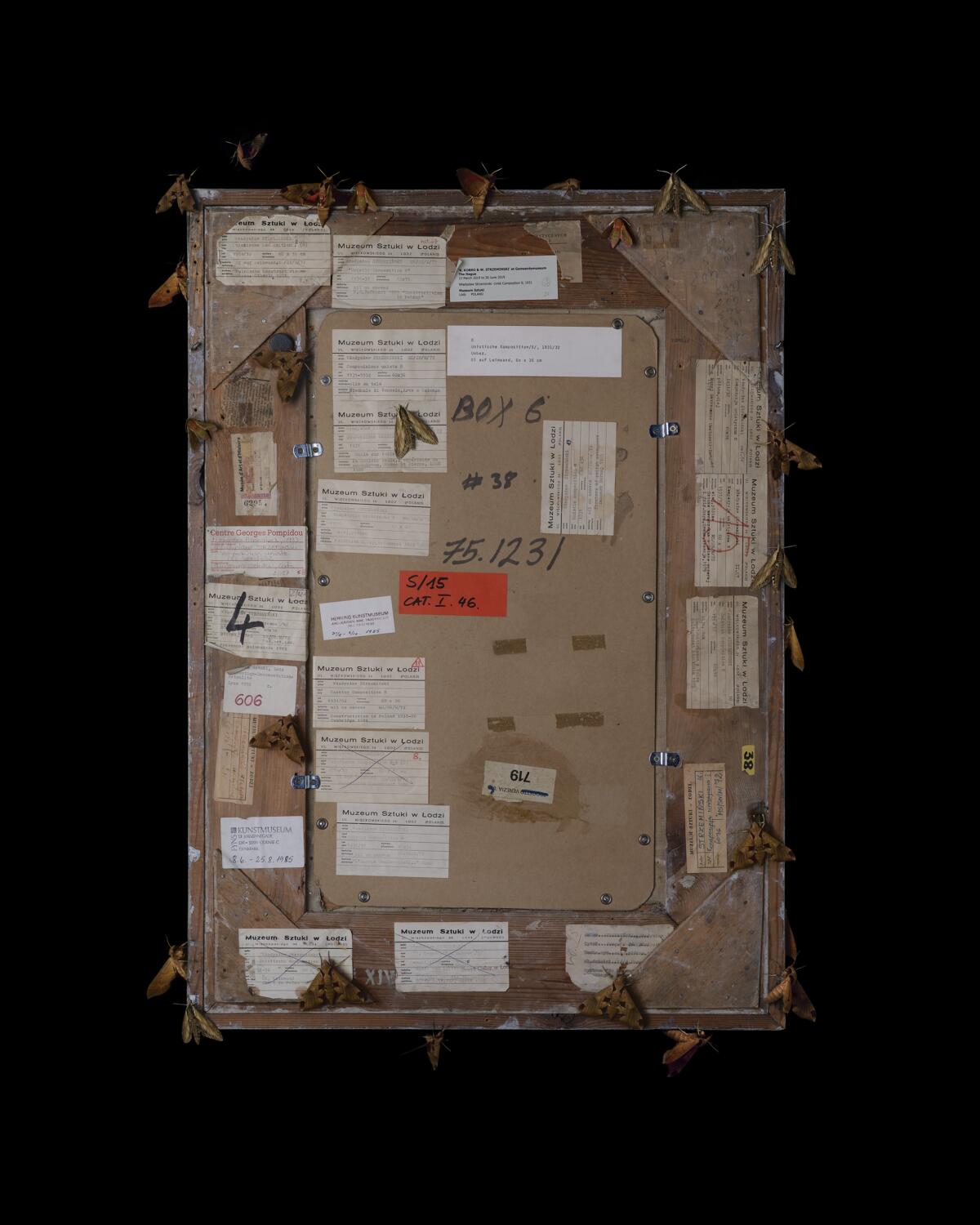
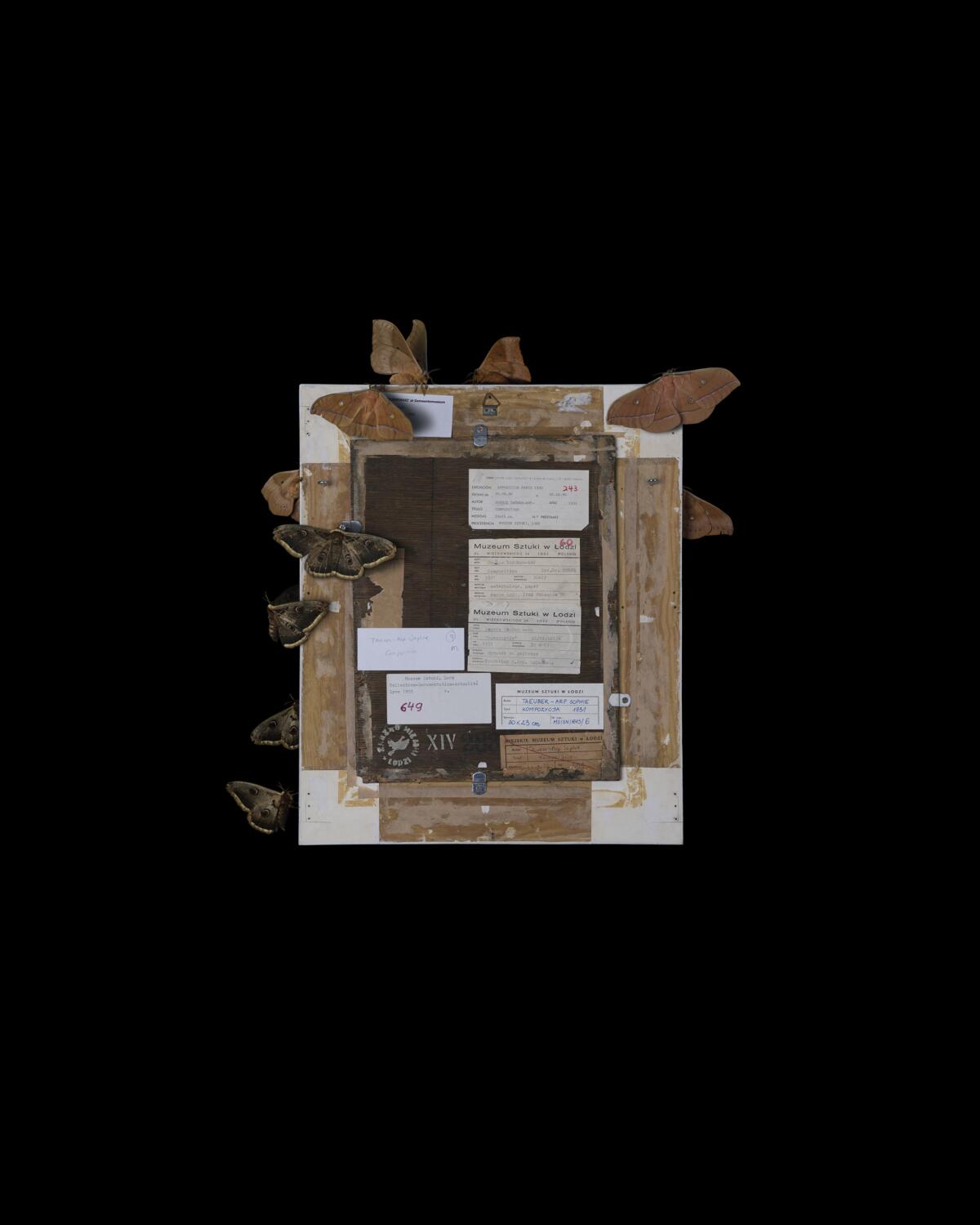
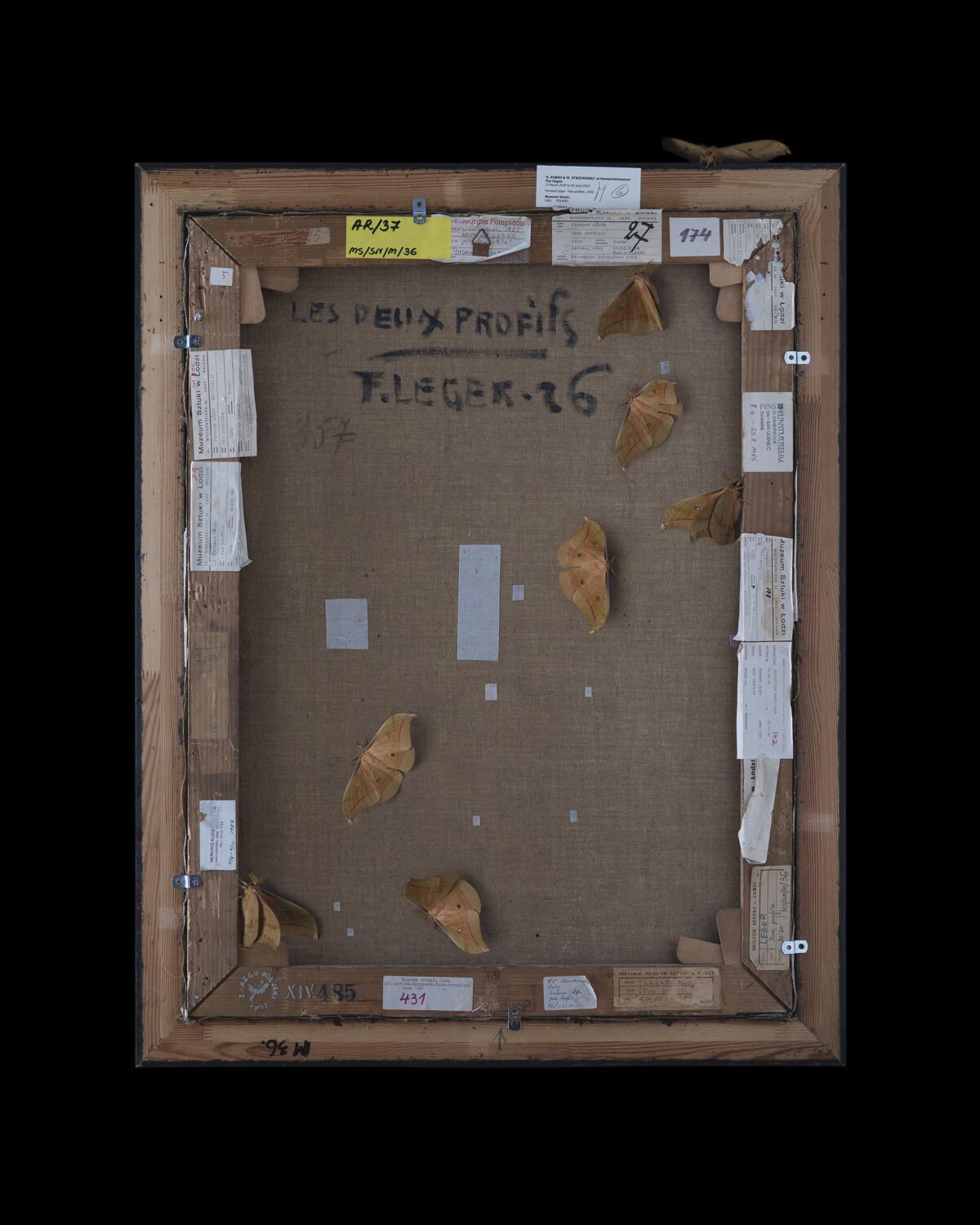
MR: London, where you live, is a global city with a multicultural atmosphere. What are your feelings after Brexit?
JC: As so many Europeans have left the UK now, we are beginning to observe a cultural vacuum of so many artistic practices that just will not find a place in (especially) England for many years. There is a great deal of institutional second-guessing of what subject matter will attract government funding and/or audiences. But then again, is this so much different from the (rest of) Europe at the moment?
MR: Your works have been shown in several Balkan countries. How are you perceived there? As one of us or a foreigner?
JC: I do think this is a question for the audience rather than the artist. I would not dare to assume. I try to be as sympathetic to the contextual contemporaneity of wherever I exhibit – especially as I am so very aware of the problem of cultural producers being flown into countries/territories to reignite their own cultural capital. The art system has far too long been a coloniser.
MR: You were born in 1979, so you surely remember Yugoslavia. What is your attitude towards it? Do you feel a kind of Yugonostalgia? A part of your exhibition presents batons from the Relay of Youth.
JC: The study of former Yugoslavia is extremely pertinent to the current socio-political landscape and I do think there is so much to learn from its past diplomatic, social and political paths – especially for the collapsing Europe. I do use many of former Yugoslav “historical ready-mades”, ranging from the country’s EXPO pavilions, selected art and architectural scenography for new political alliances – such as the Non-Aligned movement or the Relay of Youth – which is one of the greatest illustrations of the gift economy being utilised as a needle and thread of a national body, across which citizens ran and exchanged an artwork created by “the best” Yugoslav artists until it was ceremoniously gifted to president Tito. But I also equally use other nation’s histories that speak of same issues, such as Weimar Germany and its employment of Mies van der Rohe, a relationship that went on to rebrand a completely new national aesthetic: Danish modernism, European colonial style of 1930s just to mention two. I am always on the lookout for those historical hiccups that, perhaps accidentally, created deep and solid breaks with the continuum of our built environment as our choreographic device.
Jasmina, thank you very much for the conversation.
Thank you Magda for creating a great platform.
Edited by Ewa Borysiewicz and Katie Zazenski
Imprint
| Artist | Jasmina Cibic |
| Exhibition | The Palace |
| Place / venue | Muzeum Sztuki in Łódź |
| Dates | 21 May 2021 − 28 August 2021 |
| Curated by | Agnieszka Pindera |
| Photos | Anna Zagrodzka |
| Website | msl.org.pl/en/ |
| Index | Jasmina Cibic Magdalena Rekść Muzeum Sztuki in Łódź |

